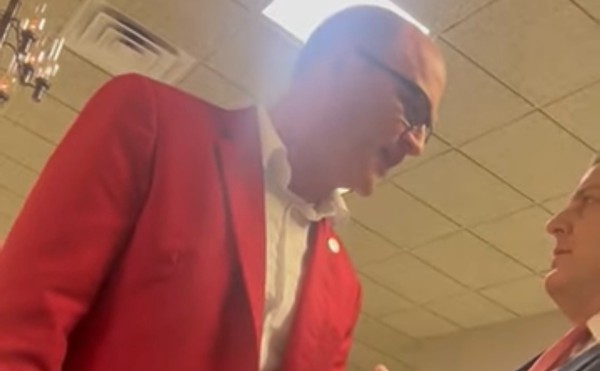
COURTESY OF BRANDY TATE
Fatally shot on Christmas Eve, Christopher Rea is among the victims of a historic year of homicides.
Christopher Rea had always adored Christmas. "It was his favorite holiday," his sister, Brandy Tate, recalls. "He loved the big Christmas trees and the lights."
But this year, the father of three never got the chance to celebrate the holiday. On December 24, the 21-year-old was discovered shot to death in a vehicle in the Patch neighborhood of south St. Louis. Tate tells the Riverfront Times that the family is now hoping for answers while police investigate.
Rea's death came amid an extended holiday weekend that saw the city's homicide count pass 260, a dire benchmark within striking distance of the city's "record" of 267 homicides that has stood since 1993. Rea's was the third suspected homicide investigated by police on Christmas Eve; the killings continued on Sunday when three separate shootings left three men dead.
St. Louis' climb toward the bloody record set nearly three decades ago is a looming reminder of a much older crisis — and one that affects thousands of lives, including both victims and their families, every single year. But at a time when the COVID-19 response dominates the region's attention, 2020's homicide numbers can't be ignored. They are in a league of their own.
Compared to 2019, which ended with 194 homicides, this year's 260+ killings represent an increase of nearly 35 percent — what appears to be the largest year-to-year spike in a generation. The summer's 76 homicides doubled the death toll recorded in the city's most violent years.
Indeed, 2020 marked itself as the peak of an entire decade of St. Louis' steadily rising homicide counts. Starting at 144 homicides in 2010, the city recorded lows of 113 killings in 2011 and 2012.
By 2015, the homicides were undeniably skyrocketing. That year, as St. Louis approached 200 killings for the first time since the early '90s, Riverfront Times reporter Nicholas Phillips took a deep dive into the crisis, analyzing homicides going back to 2008 and outlining the frustration and finger-pointing between police, public officials and prosecutors.
While the 2015 homicide count was shocking, Phillips' story noted that the year's homicide rate of 50 victims per 100,000 people was still far below the numbers recorded in the city's all-time bloodiest year, 1993, during which the homicide rate hit 69.
But, as Phillips also noted, the St. Louis of 1993 had a population of around 387,000. These days, with the city at roughly 300,000 residents, it still has the homicide count of a much larger city. In 2019, St. Louis ended the year with 194 killings and a homicide rate of 65. Now, one year later, the homicide rate has already blown 2019 and 1993 out of the water: In the St. Louis of 2020, there are 87 homicide victims per 100,000 people.
Globally, a homicide rate of 87 would make St. Louis the fourth deadliest city in the world, narrowly topping the homicide rates recorded in the Mexican cities of Ciudad Victoria and Ciudad Juárez, according to a 2019 ranking by USA Today.
The numbers are shocking and, whether 2020 or 2015 or 1993, there are no easy answers. According to homicide statistics released by the St. Louis Metropolitan Police Department, police closed 74 cases this year, leaving more than 70 percent of the year's homicides unsolved. Both Police Chief John Hayden and Circuit Attorney Kim Gardner have cited lack of cooperation from the public and blamed witness intimidation for the low number of solved cases, but these obstacles were similarly raised by the city's previous mayor, police chief and top prosecutor.
The city officials have changed. The crisis hasn't.
Still, that didn't stop U.S. Attorney General William Barr from being ludicrously wrong when he bragged in October that a federal anti-crime initiative had reduced St. Louis homicides by 49 percent, a claim that drew debunkings from both RFT and the St. Louis Post-Dispatch.
The crisis goes on. From federal to state to local levels, no one seems to be know how to help St. Louis descend from its bloody peak. The numbers are staggering and, in terms of human loss, incomprehensible.
For people like Brandy Tate, who this week started a GoFundMe campaign to pay for her brother's funeral, St. Louis' historic year of killings is now part of the personal history of her family's loss.
"He left three little girls behind," Tate says. "He was full of life, and I just want to ask the public if anyone knows anything. Our family has been taking it hard."
In an email, an SLMPD spokesperson said that the investigation into Rea's death is ongoing, and that anyone with information is urged to call the Homicide Division directly at 314-444-5371. For a reward, anonymous tips can be left at CrimeStoppers at 866-371-8477.
Follow Danny Wicentowski on Twitter at @D_Towski. E-mail the author at [email protected]





